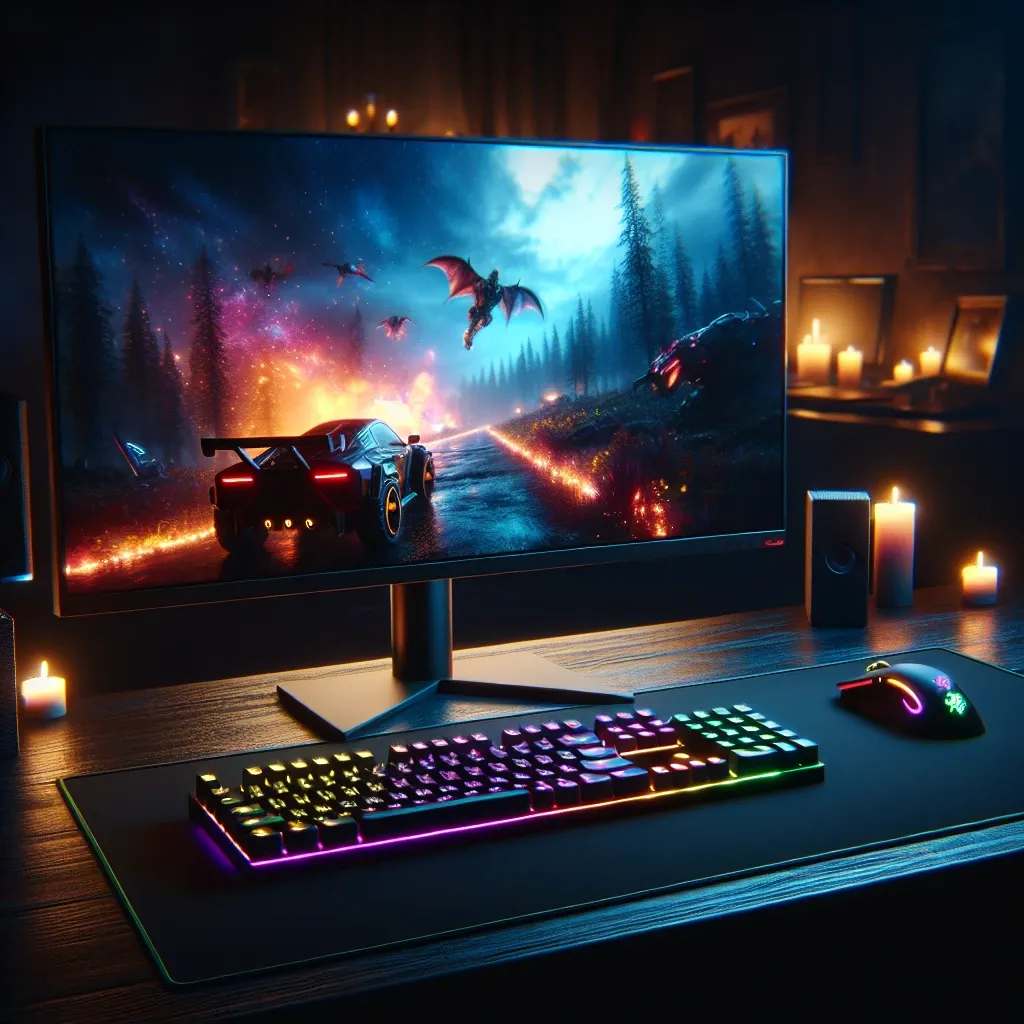In the rapidly evolving world of gaming, selecting the best resolution for your LED monitor can significantly enhance your gaming experience. With numerous resolutions available on the market, it’s imperative to understand how each resolution impacts your gaming performance, visual fidelity, and overall enjoyment.
Understanding Monitor Resolutions
Monitor resolution refers to the number of pixels that make up the display. The higher the number of pixels, the clearer and more detailed the image. Here is a breakdown of the common gaming resolutions:
| Resolution | Common Name | Pixel Count |
|---|---|---|
| 1920×1080 | Full HD (FHD) | 2,073,600 pixels |
| 2560×1440 | Quad HD (QHD) | 3,686,400 pixels |
| 3840×2160 | Ultra HD (UHD) | 8,294,400 pixels |
| 7680×4320 | 8K | 33,177,600 pixels |
Full HD (1920×1080)
Full HD, or 1080p, is one of the most common resolutions for gaming. It’s widely supported by most games and hardware, making it a popular choice among gamers. Here are some advantages:
- High frame rates: Most gaming rigs can handle 1080p resolution effortlessly, providing smooth gameplay.
- Good visual clarity: Offers a clear and detailed image without putting too much strain on the hardware.
- Affordable: Monitors and hardware for 1080p are generally less expensive, offering a good balance of performance and cost.
Quad HD (2560×1440)
QHD, also known as 1440p, strikes a balance between performance and visual quality. It offers a noticeable improvement over FHD without requiring the top-tier hardware needed for 4K. Benefits include:
- Improved visual quality: More pixels result in sharper and more detailed images.
- Balanced performance: Offers higher resolutions while maintaining good frame rates on mid to high-end gaming rigs.
- Future-proof: With more games supporting 1440p, you’re set for the long term.
Ultra HD (3840×2160)
UHD, or 4K resolution, offers an exceptional visual experience but requires substantial hardware to run smoothly. Consider the following:
- Superior image quality: Provides an incredibly detailed and immersive gaming experience.
- Hardware demand: Requires a high-end gaming system, including top-tier GPUs and CPUs, to maintain adequate frame rates.
- Investment: 4K monitors and compatible hardware are more expensive, contributing to higher overall costs.
8K (7680×4320)
8K resolution represents the pinnacle of current display technology, boasting four times the pixel count of 4K. However, it is not commonly used for gaming due to several factors:
- Extremely high hardware requirements: Even the most advanced gaming setups struggle to run games at this resolution.
- Limited content availability: Few games and media support 8K, limiting its practicality.
- Cost: 8K monitors and the necessary hardware are prohibitively expensive for most gamers.
Choosing the Best Resolution for Your Needs
Performance Considerations
When selecting the best resolution, consider the performance of your gaming rig. Higher resolutions demand more processing power and can reduce frame rates. Therefore, finding a balance that your system can handle is crucial.
Visual Preferences
Visual clarity and detail are essential for an immersive gaming experience. While higher resolutions provide better visuals, they may not be necessary if your monitor size does not justify the extra pixels. Evaluate your visual preferences and choose accordingly.
Budget Constraints
Your budget will also play a significant role in choosing the resolution. Higher resolutions require more expensive monitors and more powerful hardware, leading to increased overall costs.
Conclusion
Ultimately, the best resolution for gaming on an LED monitor depends on several factors, including your hardware capabilities, visual preferences, and budget. Full HD is great for those looking for high frame rates and affordability, Quad HD offers a balanced experience, and Ultra HD provides superior visuals at a higher cost. While 8K presents cutting-edge technology, it remains impractical for most gamers due to its cost and hardware demands. By considering these factors, you can choose the resolution that will provide the best gaming experience for your needs.

